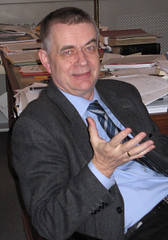
PREV ARTICLE
NEXT ARTICLE
FULL ISSUE
PREV FULL ISSUE
INTERVIEW WITH BERND KLUGEBernd Kluge retired October 1, 2014 as of the Director of the Münzkabinett (Coin
Cabinet) of the Staatliche Museen zu Berlin, also known as the Bode-Museum. This week
CoinsWeekly republished a 2009 interview with Kluge by Ursula Kampmann. Here's an
excerpt. -Editor
BK: To be honest, I only realized it when I was already employed at the Münzkabinett. Working with coins was nothing that ran in the family. Coins only became an issue to me when I tried to find a suitable job in the medieval area once I finished my studies of history at the Humboldt University Berlin. The only vacation available was at the Münzkabinett. I then came here on a trial basis, and, strictly speaking, not so much the coins made the difference but the beautiful rooms, the large doors, the library, in short the entire classy and academic atmosphere. Well, I said to myself, let’s just try this numismatics for once. That it was to become something for life was not yet apparent at the time. UK: What did your work entail exactly? Did you first unpack the coins that had returned from Russia? BK: The unpacking had long been done by then. What awaited us – and me, as I arrived right in the middle of it – was the toil of a general revision of the collections that had been returned from the Soviet Union in 1958. When the coin trays were being put into the drawers again it became apparent that all trays were present and accounted for but that every single one of them was in disarray. What followed then was a revision of the stock from A to Z, conducted with military precision, insofar as we systematically checked, in every cupboard and in every tray from end to end, if every single coin was lying on the right piece of paper with the correct statement of provenance. We literally examined piece after piece, which took us more than 20 years, while the challenge was to join the right coin with the right piece of paper. UK: Had the trays been dropped in Russia? BK: No, certainly not. The entire collection had been evacuated form the Kaiser Friedrich Museum (today Bode Museum) to the air raid shelter in the Pergamon Museum in 1942. The trays had already been bundled and tied up to form larger packages for transportation. In these packages the collection was then transported by the Red Army to St. Petersburg, which of course was called Leningrad back then, by train in 1945. Probably in order to count the coins and to do some statistical work, they were removed from the trays, but only the gold and the silver coins, to be specific. Copper and bronze were left untouched. The mess was created when the Russian noble metal counters actually turned the trays when they put the coins back in. Our trays are lying in an upright position, but the Russians had made it a landscape format to the effect that there are still the right coins on the tray, albeit the pockets they were lying in were completely wrong. To find the key to this systematic disarray and to put the coins back in the right order was the detective work of those years. UK: Who was the first one to realize how it worked? BK: The colleagues from ancient times were the first ones to notice. As for modern times, the situation was not that sincere because on most of the coins the date is given. These dates are likewise stated on the little sheets of paper, so that it was relatively simple to join the coins dating from 1768 with the cards stating the year 1768. As for ancient and medieval times, hardly any coin comes with a year. In some cases, it took a lot of provenance research to combine the right coin and the right card again. For example, the recording of the findspot is extremely important in the case of medieval coins, in order to resolve questions as to where and when the often silent coins had been produced, as can be seen with the bracteates. Sometimes the task was such a difficult one that we had to spend an entire day on one single tray. Twenty years! What a Herculean effort! I contacted Numismatourist Howard Berlin
for more information. He knows Prof. Dr. Kluge and had seen him many times at the museum. Howard
forwarded several images and some are reproduced here with permission. Thanks! Howard heads off on
Tuesday for a trip to Berlin, Vilnius, Tallinn, and London. Happy numismatic touring! -Editor
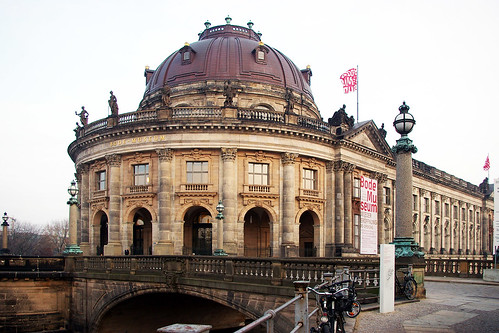
The Bode-Museum Building 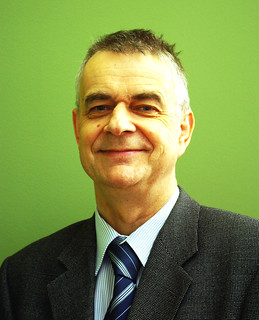
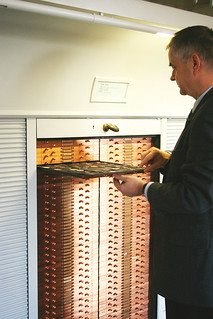
Dr. Kluge; Dr. Kluge Examining Coin Tray 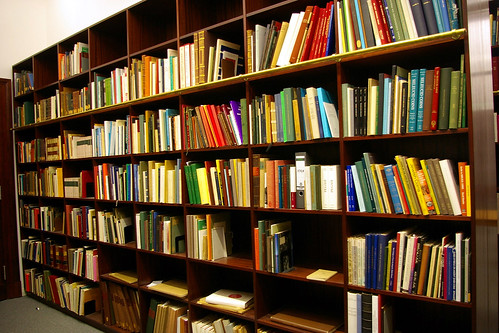
The Bode-Museum Numismatic Library For information on Howard's book, see:
To read the complete article, see:
Wayne Homren, Editor The Numismatic Bibliomania Society is a non-profit organization promoting numismatic literature. See our web site at coinbooks.org. To submit items for publication in The E-Sylum, write to the Editor at this address: whomren@gmail.com To subscribe go to: https://my.binhost.com/lists/listinfo/esylum All Rights Reserved. NBS Home Page Contact the NBS webmaster 
|
